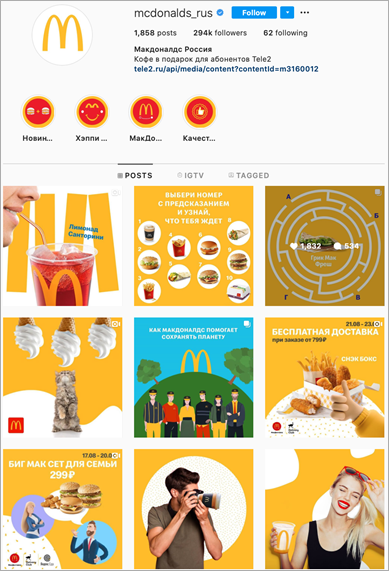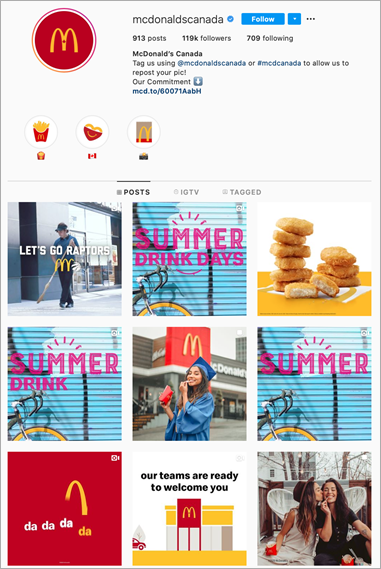The eCommerce market is growing with unprecedented speed. In 2019, eCommerce sales worldwide amounted to $3.53 trillion US. What’s more, by 2022 this number is expected to increase to $6.54 trillion US.
Indeed, buying online is becoming more and more popular. Living in a fast-moving world — and especially now during the pandemic — leaves us no choice but to say “yes” to online shopping. It saves us time and resources as we don’t need to go somewhere physically — we can buy with just one click.
This switch to an eCommerce model means more opportunities for companies to acquire international markets.
However, this also means that a convenient platform for online sales must be created and made accessible and understandable for people from different regions. Here’s where content localization will help you to become as authentic as possible for foreign markets.
What is content localization?
Content localization is the process of adapting all the content of a website or app to the target audience and market. It helps to make the message clear for your overseas clients.
It’s important to note that content localization is not just about translation. Localizing content means taking into account regional specifics, local messages, and cultural differences.
We could say that content localization consists of three elements: translation, localization, and transcreation. The last term, transcreation, means adapting the message to another language and cultural realities, or even changing the message to fit the target region. Of the three elements, transcreation is the highest level of content adaptation, with translation at the first level.
Thus, content localization means internationalization to make your online store accessible in foreign countries in their language and within their cultural paradigm.
Why does eCommerce need localization?
eCommerce is online business. The more people see your content, the more people are converted into your real-world clients.
Naturally, numbers speak louder than words. Research shows that about 65% of online shoppers from non-Anglophone countries prefer to buy products when information is available in their native language, even if the translation is quite poor. What’s more, about 40% of them will never buy from websites in foreign languages. We’re pretty sure you don’t want to lose that 40% of your potential clients.
Localized websites have a better chance of being visited by local target audiences. By performing content localization, your business has the opportunity to enter a foreign market. Native websites create a seamless buying experience for your foreign customers.
Localization can save you from huge business failures and mistakes. One famous epic failure in localization happened to Electrolux, a Swedish multinational home appliance manufacturer. They failed to do market research for the US market and entered the market with a vacuum cleaner with the slogan “Nothing sucks like an Electrolux.” Although a successful campaign in the UK, where “suck” did not have (yet) a negative connotation, this catchphrase didn’t help to conquer the US market. This is yet another vivid proof that content localization is a must for every eCommerce business.
How to perform content localization wisely
To get your content localization off on the right track, it’s best to have a clear plan, so as not to miss any essential steps. You need a working and tested strategy to get everything right. Here are the most important steps to take during content localization for eCommerce websites. Don’t miss any of them!
Conduct market research
Market research is the first and the most important step before actually starting the content localization process.
Research the existing data about your clients, and understand the regions your clients are coming from. Then analyze this data to determine which languages to concentrate on.
Also, research what the most popular products are for your potential target market. For example, if your eCommerce shop sells clothes, the product line for Australia may be different than for Iceland. Use Google Keyword Planner and Google Trends to understand what products will perform best in any given region. Because, let’s face it, trying to sell summer clothes in Iceland could be an awkward proposition.
Finally, pay attention to the social media channels used in the given region. For instance, in addition to Instagram and Facebook, you’d be wise to also consider VKontakte (VK) and Odnoklassniki — with content in Russian — if you plan to enter the Russian market.
Identify the content to localize
Sometimes you may not need to localize all your website content. If you won’t be offering all your products in the new region you’re entering, you won’t need to localize all the content.
Also, it’s a good idea to start with a test period: try localizing 10% of your content or product information. This will give you a general idea of whether or not your localized website is performing. Then, once you know you have every chance of success, you can move forward with localizing the rest of the website content.
Finally, understand from your research which is more important for your target market — your website or your product. Maybe your prospects are ok to purchase a weight loss app from a website in English — but the app itself should be localized. For other products, it may be the other way round.
SEO is a must
Professional SEO can increase engagement, traffic, and conversion on your localized website.
You will need to consider the keywords used in a specific region to optimize your localized website. People in different regions use different search terms. For example, in the UK people will use the term “lorry” while in the USA the proper term is “truck.”
You will need not only to do keyword research but also to insert the right keywords into the website content and translate URLs, titles, subtitles, and meta descriptions into the target language.
Think creative and think local
Don’t forget to pay attention to marketing creatives. That’s right — you’ll need to promote your website on the foreign market. It’s essential to make your advertising as native and local as possible to ensure good engagement and conversion.
One study shows that localized content performs much better. The results of a comparison of two Facebook campaigns were striking: ads that used localized copy produced click-through rates that were 22% higher among women and 87% higher among men.

Cultural context check
Pay attention to the cultural paradigm of the new region. One important element is holidays, which vary from one country to the next.
Black Friday and Cyber Monday have become the most important days for eCommerce in the US and the UK and have “spread” also to many other countries. But China has its own version of this day — Singles Day, or Double 11. This day is the Chinese version of the annual shopping holiday. So if you’re breaking into the Chinese market, don’t forget to replace Black Friday with Singles Day and offer exclusive discounts for your Chinese clients.
Currency, units of measurement, and size conversion
For eCommerce businesses, price tags are the first things to think about. Users want to see prices in their local currency. Alternatively, you can list two prices, in both the original and the local currency.
When localizing currencies, use the proper symbols or codes to indicate the currency. Also, note that some currency symbols are listed before the price, like $ and £, while some are listed after, such as €. Decimal marks also differ in various countries: some regions use commas, while others use periods.
Don’t forget to localize units of measurement. For example, temperatures are measured differently in Europe (°C) and the USA (°F). Also, consider whether to use the metric or the imperial system (cm or feet, km or miles, kg or pounds).
If you’re selling clothes, you need to think about the sizes indicated on your website. For example, European shoe sizes may look like 34, 35, 36, etc., while in the US the numbers start lower — 6, 7, 8, etc.
Localized shopping cart
Not all shoppers who put items in their cart convert into actual paying customers. In fact, the average cart abandonment rate is a rather high 70%. If you don’t localize your shopping cart, this rate may climb even higher. To put it the other way, localizing your cart can have a huge impact on your bottom line.
You need to adapt your shopping cart to the local requirements and make the cart convenient and familiar for users in the region. Don’t forget about switching to the local currency and adding popular local payment options. More tips on this in a dedicated blog post: Think Local, Not Just Global: Localize and Optimize Your Cart to Bring in Higher Revenues.
Definition check
It’s no secret that even a single language can have numerous regional variations. Take the English language for example. British English and American English differ considerably.
For instance, ‘elevator’ and ‘lift’ means the same thing, but the former is used in American English, and the latter in British English. The same thing is true of ‘vacation’ and ‘holiday.’ Pay close attention, because a language can sound very different depending on where it is spoken.
Naturally, if terminology differs even in the same language, it changes completely from one language to the next. Thus, we recommend that you investigate word usage, meanings, and definitions in various cultures.
Date and time formats
Date and time formats are important, as improper formatting may mislead your customers. Suppose a European customer places an order for delivery by 11/09/2020. They’re in for an unpleasant surprise. This is because 11/09/2020 is understood differently in the USA and in Europe — November 9 and September 11, respectively.
In most countries the day is placed first and the year last (DD/MM/YYYY). In some countries, however, such as China, Korea, and Iran, you will find a date format of YYYY/MM/DD.
Time formats can be either 24-hour or 12-hour. In the USA, it’s common to use the AM/PM format, while in Europe 24-hour time is more common.
Legal issues and regulations
To protect your online business, you need to take into account all the legal regulations in the region you’re entering.
Make sure that the products you’re selling are legal in the given country. Kinder Surprise Eggs once famously launched in the USA, only to discover that their chocolate eggs were illegal in that country. Neighboring Canada and Mexico, on the other hand, allow sales on their territory.
Also, make sure that you include your Privacy Policy and Terms of Use on your localized website and adapt them to the region you’re entering. You need to be a valid legal entity in order to function on the territory of another region. It’s best to consult with your legal advisor if you’re unsure of any legalities.
Regional support
If you’re going this far with localization, it’s a great idea to localize your support team. You can either hire a local team in the new region, or else hire remote employees at your original company.
Also, don’t forget to create a separate communications channel — an email, social media page, or phone number — to make the work of your support team easier and more productive. Offering local phone numbers, or even free tolls for clients to call in is also a good idea, for them to be encouraged to call and solve their issues quickly and to prevent them from incurring international phone charges.
Native photos and pictures
Content is not just about words. Consider replacing photos and images that don’t fit the new local market. For instance, if you’re entering the Japanese market, try to replace photos of Europeans and Caucasians with Japanese models. This will look more natural.
Here you can see how the owners of this website localized some elements of their website into Japanese, but still left English text and non-native photos. A partially translated website means a bad UX, and may ruin the entire image of your brand on the local market.

Localized social media is essential
Social media rules the business world today. You need to use it to your advantage in your eCommerce company.
If you have social media accounts for your main eCommerce business branch and you want to launch in a completely different region, it’s a great idea to create separate social media accounts.
Localized social media will drive more personalized connections and improve the user experience.
For example, McDonald’s has different accounts for various countries around the globe.


Secret tips for eCommerce website localization
Looking at the strategy described above, you may be thinking that content localization is extremely complex. But don’t worry: while it may seem challenging, it’s very achievable. Most importantly, the results of content localization for your eCommerce website are bound to make you happy. And you’ll be rewarded with higher sales volume, revenue and ultimately an improved ROI. Let’s take the case of Connox, a German online seller of home goods and furniture. After localizing its French and German online shops, the company almost immediately saw a steady increase of their monthly revenue by approximately 20%.
Below are some secrets and tricks of the trade we’ve compiled for the most curious readers.
-
Continuous localization
It’s worth noting that eCommerce websites usually have a lot of content like product descriptions, prices, delivery information, etc. When you update your content, usually you don’t need to translate the entire website all over again: you just need to add some snippets of translation to the existing website. Continuous localization will help you here. This method of localization works great for constantly evolving projects where new small texts are being added on an ongoing basis. These updates can be highlighted and then translated in a dedicated cloud platform. Once translation is ready, it can be updated on your website automatically in the new release.
It’s always advisable to use native speakers as translators, but make sure they also understand the context — the same word can have different meaning and in the wrong context, it can fire back and loose conversions instead of gaining.
Continuous localization is perfectly suited to the essence of eCommerce. However, sometimes website owners need to translate and manage small updates on their own and quickly. For this an online service such as Nitro can be used. It allows you to translate as little as a single word. This makes it very useful if you want to add, for instance, a new product to your localized website. Just send your product information via a web-interface and you’ll receive the localized text within 2-24 hours. It’s as easy as ABC.
To sum up the entire strategy, we highly recommend paying attention to these aspects of content localization:
- Target audience and market research
- Cultural context
- Legal regulations and rules
- Local social media marketing
- Correct translation of all descriptions
- Proper formats for time, date, currency, clothing sizes, etc.
-
Localization testing
Content localization is great, but it’s almost pointless without subsequent localization testing. You need to make sure you’ve done everything correctly and that there are no mistakes — not even the tiniest.
Hopefully you now clearly understand that content localization is not just a nice thing to have, but a real necessity if you want to go global with your eCommerce business.
____________________
About the author

This article has been contributed by Alconost, a professional translation and localization company. Since 2004 Alconost has been offering professional translation and localization services for apps, games, websites, and other software into 70+ languages.





